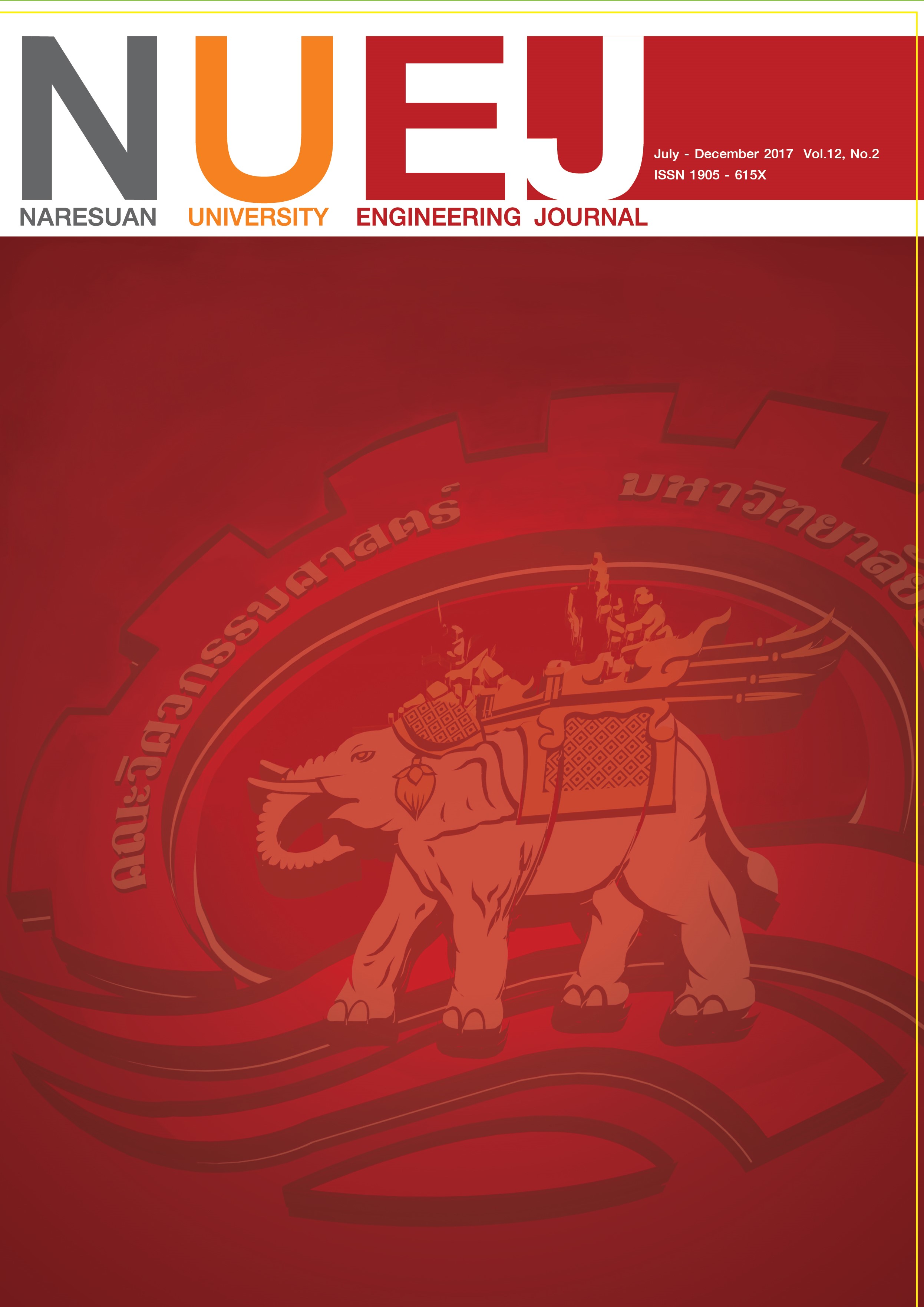อิทธิพลของพลาสมาเย็นต่อเซลล์มะเร็งในโครงเลี้ยงเซลล์แบบสามมิติจากวัสดุชีวภาพ Impact of Plasma Treatment on Cancer Cell Culture in 3D Biomaterial Scaffold
Main Article Content
Abstract
Cancer is one of three major causes of death around the world. There are several techniques for cancer treatment. Nevertheless, most current treatments cause severe side effects to the patient. Recently, Cold Plasma technology has been introduced and implemented as a tumor and cancer therapy in mammalian cells. Several studies showed the benefit of Cold Plasma on cancer cell death induction without damaging neighboring normal cells. However, the Cold Plasma treatment conditions such as plasma power, gas, and time for properly treat the infected cell has not been clearly defined. In this study, investigation of Cold Plasma treatment on cancer cell will be performed based on tissue engineering approach. Three dimension scaffold plays an important role on the structure and biological mimic condition for cell adhesion and proliferation. This biomaterial 3D scaffold was fabricated from fibroin and chitosan using freeze drying technique, which then will be cultured with chondrosarcomar cells (cartilage cancer cells) incubated at 37ºC 5% CO2 for 1 day for the investigation. Then, the treatment of Cold Plasma with various conditions of electrical plasma power, percentage of O2 mixed gas, and duration will be investigated based on Factorial Experimental Design. Consequently, the survival cell percentage after Cold Plasma treatments will be determined by MTT assay. Finally, the results of survival cell percentage show that the condition of 30 s. treatment time, 30 ml/min O2 with Argon and 30 Watt power causes the lowest cell viability of 83.33 percentage
Article Details
References
สถิติสาธารณสุข พ.ศ.2558: Public Health Statistis 2015 สํานักนโยบายและยุทธศาสตร์.- - กรุงเทพฯ: โรงพิมพ์ สามเจริญพาณิชย์ (กรุงเทพ) จำกัด, 2559.230 หน้า. ISSN 08570-309
Hicks RF. Atmospheric-Pressure Plasma Cleaning of Contaminated Surfaces. Los Angeles: University of California, Los Angeles; 1999. p. 1-131.
Joh, H, M., , Kim, S, J., Chung, T, H,. Leem S, H., 2012. “Reactive oxygen species-related plasma effects on the apoptosis of human bladder cancer cells in atmospheric pressure pulsed plasma jets”. APPLIED PHYSICS LETTERS 101, 053703.
Cooke, M, S., Evans, M, D., Dizdaroglu, M., Lunce, J., 2003. “Oxidative DNA damage: mechanisms, mutation, and disease” The FASEB Journal: 0892-6638/03/0017-1195.
Correia, CR., Moreira-Teixeira, LS., Moroni, L., Reis, RL., van Blitterswijk, CA., Karperien, M., 2011. “Chitosan scaffolds containing hyaluronic acid for cartilage tissue engineering” Mary Ann Liebert, Inc 0467: 717-730.
Vepari, C., Kaplan, DL., 2007. “Silk as a biomaterial” Prog Polym Sci;32: 991-1007.
Zhang, X., Cao, C., Ma, X., Li, Y., 2011. “Optimization of macroporous 3-D silk fibroin scaffolds by salt-leaching procedure in organic solvent-free conditions” J Mater Sci Mater Med doi:10.1007/s10856-011-4476-3: 315-324.
Unger, RE., Sartoris, A., Peters, K., Motta, A., Migliaresi C., Kunkel M., 2007. “Tissuelike self-assembly in cocultures of endotheilial cells and osteoblasts and the formation of microcapillary-like structures on three-dimensional porous biomaterials” Biomaterials 28: 3965-3976.
Yan, LP., Oliveira, JM., Oliveira, AL., Caridade, SG., Mano, JF., Reis, RL., 2012. “Macro/microporous silk fibroin scaffolds with potential for articular cartilage and meniscus tissue engineering applications” Acta Biomater: 8: 289-301.
Chlapanidas, T., Farago, S., Mingotto, F., Crovato, F., Tosca, MC., Antonioli, B., 2011. “Regenerated silk fibroin scaffold and infrapatellar adipose stromal vascular fraction as feeder-layer: a new product for cartilage advanced therapy” Tissue Eng Part A 17: 1725-1733.
Bhardwaj, N., Kundu, SC., 2012. “Chondrogenic differentiation of rat MSCs on porous scaffoldsof silk fibroin/chitosan blends” Biomaterials 33 (2012) 2848-2857.
Nettles, D., Elder, S., 2001. “EVALUATION OF CHITOSAN AS A CELL SCAFFOLD FOR CARTILAGE TISSUE ENGINEERING” Orthopaedic Research Society: 0202.
Thunsiri, K,. Udomsom, S,. Wattanutchariya, W,. 2015. “Characteristic of Pore Structure and Cells Growth on the Various Ratio of Silk Fibroin and Hydroxyapatite in Chitosan Base Scaffold”. Key Engineering Materials Vols. 675-676 (2016) pp 459-462.
Xie, W., Xu, P., Liu, Q., 2001.“Antioxidant activity of a water-soluble chitosan derivates”. Bioorg Med Chem Lett., 2001; 11: 1699–701.


